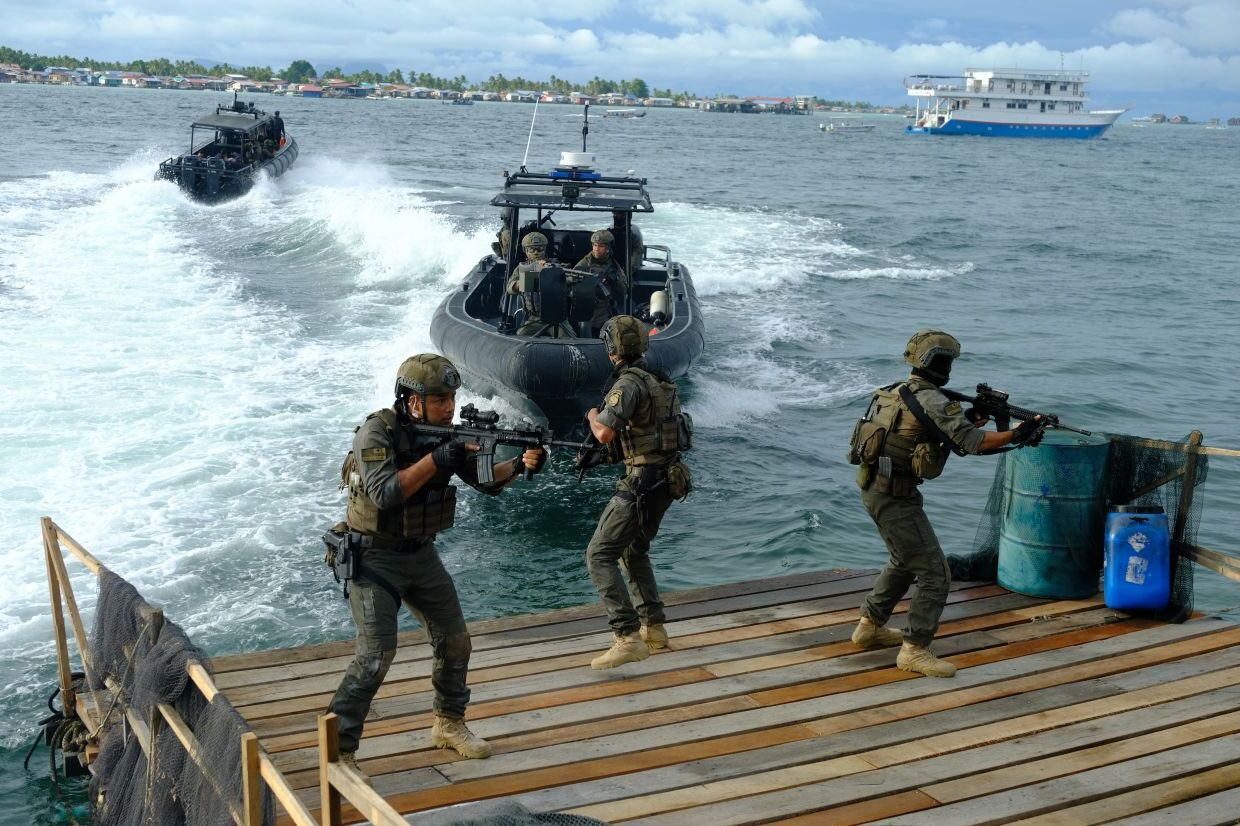
What happened during the Lahad Datu standoff? The Lahad Datu standoff was a tense and dramatic event in Malaysian history. In February 2013, a group of armed men from the Philippines, claiming to be followers of the Sultanate of Sulu, landed in Lahad Datu, Sabah. They demanded recognition of their ancestral land rights. The Malaysian government responded with negotiations, but talks broke down. This led to a military operation involving police and armed forces. The standoff resulted in casualties on both sides, including security personnel and militants. It ended in March 2013, but left a lasting impact on regional security and diplomatic relations.
Key Takeaways:
- The Lahad Datu Standoff was a historical event in Malaysia involving armed men from the Philippines claiming ownership of Sabah. It led to casualties, displacement, and strained diplomatic relations between Malaysia and the Philippines.
- The standoff highlighted the need for robust border security, better cooperation between ASEAN countries, and effective crisis management strategies. It also emphasized the complexities of historical territorial claims and their modern-day implications.
The Lahad Datu Standoff: A Brief Overview
The Lahad Datu Standoff was a significant event in Malaysian history. It involved a group of armed men from the Philippines who claimed ownership of Sabah. This standoff led to a series of intense confrontations between the Royal Malaysian Police and the armed group.
- The standoff began on February 11, 2013, when around 235 militants from the Philippines landed in Lahad Datu, Sabah.
- The group was led by Jamalul Kiram III, who claimed to be the Sultan of Sulu.
- The militants were part of the Royal Security Forces of the Sultanate of Sulu and North Borneo.
- They demanded recognition of their historical claim to Sabah and refused to leave despite warnings from Malaysian authorities.
- The Malaysian government initially attempted to resolve the situation through negotiations.
Key Players in the Standoff
Understanding the main figures involved helps to grasp the complexity of the situation. Here are some of the key players:
- Jamalul Kiram III, the self-proclaimed Sultan of Sulu, was the leader of the armed group.
- Agbimuddin Kiram, Jamalul Kiram III's brother, led the militants on the ground in Lahad Datu.
- Malaysian Prime Minister Najib Razak played a crucial role in the government's response to the standoff.
- The Royal Malaysian Police and the Malaysian Armed Forces were the primary security forces involved.
- The Moro National Liberation Front (MNLF) in the Philippines expressed support for the Sultanate's claim.
The Escalation of Conflict
As negotiations failed, tensions escalated, leading to violent confrontations. Here are some pivotal moments:
- On March 1, 2013, a firefight broke out between Malaysian security forces and the militants, resulting in casualties on both sides.
- The Malaysian government launched "Operation Daulat" on March 5, 2013, to flush out the militants.
- The operation involved airstrikes, artillery bombardments, and ground assaults.
- Malaysian security forces faced challenges due to the militants' familiarity with the terrain.
- The conflict spread to other areas, including Semporna and Kunak, causing further instability.
Casualties and Impact
The standoff had significant human and political consequences. Here are some key facts:
- A total of 68 militants were killed during the conflict.
- Ten Malaysian security personnel lost their lives in the line of duty.
- The standoff displaced thousands of residents in the affected areas.
- The Malaysian government provided aid and support to the displaced families.
- The incident strained diplomatic relations between Malaysia and the Philippines.
Aftermath and Resolution
The resolution of the standoff brought about changes and reflections on security policies. Here are some outcomes:
- The Malaysian government increased security measures in Sabah to prevent future incursions.
- The Philippine government distanced itself from the actions of the Sultanate of Sulu.
- The standoff highlighted the need for better cooperation between ASEAN countries on security issues.
- The incident led to discussions on the historical claims over Sabah and their implications.
- The Malaysian public showed strong support for the government's handling of the situation.
Legacy and Lessons Learned
The Lahad Datu Standoff left a lasting legacy and offered several lessons for the future. Here are some reflections:
- The standoff underscored the importance of maintaining robust border security.
- It highlighted the complexities of historical territorial claims and their modern-day implications.
- The incident demonstrated the need for effective crisis management and negotiation strategies.
- The role of media coverage in shaping public perception of the conflict was significant.
- The standoff remains a reminder of the importance of regional stability and cooperation in Southeast Asia.
Final Thoughts on Lahad Datu Standoff
The Lahad Datu Standoff remains a significant event in Malaysian history. It highlighted the importance of national security and the complexities of territorial disputes. The standoff involved a group claiming ancestral rights, leading to a tense situation with the Malaysian government. Despite the conflict, it showcased the resilience and unity of the Malaysian people. The incident also brought attention to the historical claims of the Sulu Sultanate and their impact on modern geopolitics. Understanding these facts helps us appreciate the delicate balance of history, culture, and politics in Southeast Asia. As we reflect on the standoff, it’s clear that such events shape the future and remind us of the importance of dialogue and diplomacy in resolving conflicts.
Frequently Asked Questions
Was this page helpful?
Our commitment to delivering trustworthy and engaging content is at the heart of what we do. Each fact on our site is contributed by real users like you, bringing a wealth of diverse insights and information. To ensure the highest standards of accuracy and reliability, our dedicated editors meticulously review each submission. This process guarantees that the facts we share are not only fascinating but also credible. Trust in our commitment to quality and authenticity as you explore and learn with us.
